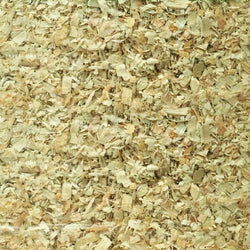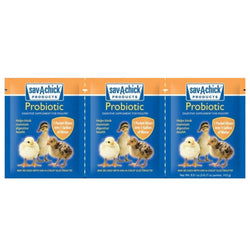Silkie Chicken: The Ultimate Guide
Back to blog
Of all the ornamental chicken breeds, the Silkie chicken (sometimes spelled Silky) is the most popular and most loved. Can't you tell why? They are sweet, friendly, super fluffy, and have excellent mothering skills. They're considered the lap dog of the chicken world...but unlike your other pets, your chickens can provide your breakfast! And according to a poll we conducted, Silkies are a favorite choice as a pet for children! They were a top choice when stacked against super popular breeds like Orpingtons, Cochins, Brahmas, and Easter Eggers.

History of the Silkie chicken
Silkies are believed to originate from Asia, including ancient China, Japan, Java, and India. The earliest Western account of Silkie chickens was from Marco Polo, who wrote about a "furry" chicken in the 13th century during his travels in Asia. In the mid-1800s, Silkie chickens made their way west, where they were recognized by the American Poultry Association Standard in 1874. Today they are a popular pet in many chicken flocks.
The personality of a Silkie chicken
The Silkie Bantam chickens are calm, friendly, easy to handle, and make great pets for kids. They often go broody and make excellent mothers. Silkie hens are known to adopt baby ducks if given a chance! Silkies are generally a quiet breed but can be known to be chatty companions - they make a perfect chicken for your first flock. Silkies love attention, cuddles, and bear confinement well; they are often kept as indoor house birds. The Silkie rooster is generally calm and docile as well. A Silkie rooster also makes an excellent rooster choice for someone just adding a rooster to their flock.

The Appearance of Silkie Chickens
Silkies are unique in appearance compared to other chicken breeds. Some notable features include black skin, blue ears, 5 toes (most chicken breeds have only 4 toes), feathered legs, and walnut combs. They also have crested head feathers, and some come with beards!
Silke chickens have black skin, bones, and darker-toned organs, although their blood is still red like other animals. This hyperpigmentation is caused by a genetic condition known as fibromelanosis; the wattles and combs can vary from mulberry to black in color. Silkies also have an extra toe on each foot due to a polydactyly gene. The extra 5th toe is located on the back of their leg, similar to a dewclaw on a dog. The Silkie rooster can weigh 2-4 lbs, and Silkie hens can weigh 1- 3 lbs. The Silkie chicken is always considered a bantam chicken, no matter its size, here in the US and Canada. In other countries, it is common for them to be separated into a bantam or large fowl category.



Feather Facts of Silkie Chickens
Several feather colors are found on SIlkie chickens. The American Poultry Association recognizes buff, white, black, blue, splash, partridge, and grey. Other colors that are bred but not recognized by the APA are lavender, cuckoo, and red.
Silkie chickens have fur-like feathers that feel like silk or satin. Silkie chicken feathers are unique in that they don't have barbicles, which are like hooks that hold the hairs of a feather together. Since their plumage lacks barbicels, they cannot fly, making them susceptible to predators if allowed to free range.
When considering coop needs for your Silkie chickens, offer them a low roosting bar and nest box. If not, it is common for Silkies to lay their eggs on the coop floor. They are also known to sleep in "Silkie piles" on the coop floor.
Egg Color and Production of Silkie Chickens
A Silkie hen usually starts laying eggs around 7-9 months of age. This is later than most chicken breeds since Silkies are slower to mature. You can expect them to lay about 100-120 small cream eggs per year or 2-3 per week. Since they tend to go broody often, their egg laying is often interrupted and inconsistent.

Care and Health for Silkie Chickens
Silkies have a lifespan of 7-9 years. While they tend to tolerate the heat reasonably well, they don't do well in a cold, wet, snowy, or muddy environment because of their hair-like feathers unless they have a covered area.
Since they are so docile and sweet, they can often get bullied in the flock; we recommend keeping a minimum of two silkies per flock to have a buddy.
Do you have any Silkie chickens in your flock? Share your sweet Silkie story with us in the comments below!
Don't have any Silkies in your flock yet? Check out our day-old Silkie chicks for sale.












3 comments
Hi fellow crazy chicken chasers bahahaha thank you all for the welcome would like to introduce myself and say hi to my new chicken pals! My newly hatched flock I raised from the fertilization until now, I believe they would be 6 months old purchased in July and they were hatchlings 7 weeks old in July are doing wonderful. I have 1 silkie she is white and 4 black hens. I have a question for an expert please. Message me anyone
I have a mixed flock that are 4 1/2 months old with 3 silkies. I have a blue silkie rooster named Brutus and a blue hen. The other cute little hen is black. I just love my silies. I usually don’t keep a rooster because they turn possessive but I am impressed with my silkie rooster so far. He is calm and sweet. I can pick him up without any complaints.
I have one blue silkie that is 3 months old. It makes a weird noise before sun down and all the hens follow it so we think its a rooster.